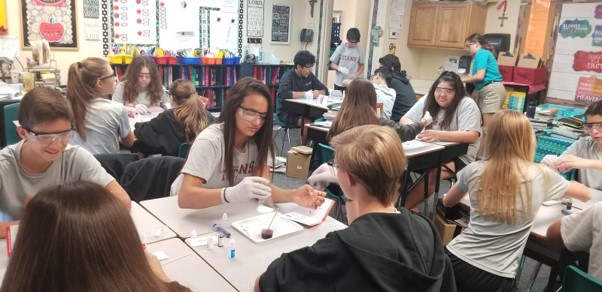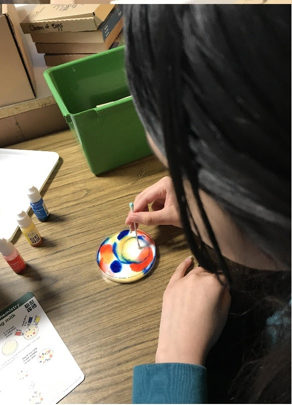What we are going to do + 3D designer
On the importance of proper visuals in science and education; position of a 3D designer well-versed in physics and chemistry; answer to the problem about washed clothes drying up in frosty air; and a new problem about a turning train.
Yesterday, I promised to share my thoughts on information transfer and communication. In fact, this is a very complex matter.
Why do some people fail to solve a problem and others “see” the solution right away? It largely depends on the presence of
the right images in your head. Our brains are almost incapable of thinking in numbers.
Try memorizing this sequence: 0982163823897202173500728728882636112734908371345.
If your life is going to depend on it, you might eventually memorize it, but you will, like it or not, come up with some kind of structure for it.
We are not really good at memorizing facts until we embed them into some kind of structure. We perceive ideas through images. A good scientist always has good images in his head. These images can be very non-trivial, by the way. For instance, I have a very clear image of an associate operator from linear algebra. I “see” it. However, it will take me several weeks, if not months, to prepare this image for transfer. But I haven’t had time for that. Similarly, many scientists have their own images collected and systemized over years, but no time to transfer them.
Here is an example. Task: explain the work of a car differential. Here it is, an honest, beautiful, but useless visualization:
Did you get anything? I didn’t :( My imagination fails to derive anything from this video. And here is an example of a proper visualization, which creates a useful image that our mind has no problems working with:
And this is basically what I want to do. I want to learn to visualize the right images to make physics and chemistry studies easier. When I conduct chemical experiments with my kids, they like it, but they like it in the way they enjoy magic tricks: something changes color, something explodes, something bubbles. However, the amount of knowledge that you get from these experiments is close to what you get from magic shows. Now imagine that you also see an animated demo on the wall showing the motion and interaction of molecules while watching the reaction in the test tube. A demo that explains why the reaction is going exactly like this. This is a completely different level of understanding! In many cases, it enables you to transfer knowledge in a much more compact form. Knowledge that will not be a set of remembered facts, numbers and formulas, but an understanding of what the world is made of.
3D-designer with a solid knowledge of physics and chemistry
An important task for us will be to come up with good images and visualize them the right way. And we do need a genius to visualize how a photon is absorbed by a molecule. Unfortunately, even the best designer cannot do that, since he simply doesn’t know what a photon is. That is why we need a designer with a good understanding of physics and chemistry. It could be an infatuation with science in his childhood that went away when he became a 3D designer. But this techie’s nature just can’t go away and calm down – it itches and makes its way from under the designer’s skin. That’s the kind of person we need! He will face a truly monumental task – come up with new images for the most basic things: atoms, molecules and such. He’ll need to work with scientist and developers, making beautiful and scientifically correct animations.
Conditions:
- 150,000 rub per month
- No moonlighting, it must be the main and the only job
- Work at the office, south-western part of the city (temporarily, will be moving out this fall)
- Vacation - 1 month
- Health insurance
Apply to the 3D designer’s position and submit your resume
Solution for yesterday’s problem about laundry and a new one for today
Why does ice evaporate, and a spoon does not? When I went to school, I was told that everything consisted of molecules. However, this is not entirely correct. Take a salt crystal. It does not consist of NaCl molecules. Atoms of chloride and sodium are placed in an atomic grid and are held together by the same forces that keep atoms together in a molecule. So it’s like one big molecule. The binding force between atoms is very strong. The same force in a metallic grid is also very strong. Ice, however, has a different structure. This is a molecular grid. When frozen, water exists in the form of molecules that are bound by weaker intermolecular forces. That is why a molecule of water needs considerably less energy to leave the crystalline grid. There will always be faster molecules with more energy in the chaotic motion of molecules that will be able to break the weak intermolecular forces and escape. Here is a rough description of how ice evaporates and why denser substances with stronger atomic forces do not.
And here is a new task with a video answer at the end. We have already found out how a car differential works. But how does a train, which does not have one, turn? When a train enters a turn, the inner and the outer wheels need to travel different distances, and if there is slipping, the rail will quickly wear out.
If you have a solution or have given up, you can watch an explanation by the one of a kind and funny Richard Feynman. Look at how he enjoys explaining it!
See also

CASE STUDY - 8th Grade students at St Timothy's Catholic School use MEL Chemistry to enhance their science lessons
Saint Timothy Catholic School in Mesa is committed to promoting academic excellence in each child it looks after. They encourage self-discipline, self-respect, and respect for others. They understand the importance of engaging students in a comprehensive and relevant curriculum. As a result, the middle school science teacher from St. Timothy Catholic School is using MEL Chemistry subscriptions to enhance and expand their range of learning activities.

CASE STUDY - MEL Chemistry allowing pupils to reach their full potential
The Empower Learning Center is the Alternative Learning Program (ALP) within the Hinckley-Finlayson School District. They offer non-traditional education options for students ages 16-21 in their daytime program, night school for traditional high school students who need to make up credits, and night school for adults 18 and older who would like to complete their diploma or equivalency.
The school was seeking engaging, hands-on chemistry kits to make their science classes more interactive, and to help their students understand key science concepts and achieve their full potential in chemistry.

CASE STUDY - MEL Chemistry at Lund International School, Sweden
Emma Taylor, a science teacher at Lund International School (Sweden), has chosen MEL Chemistry sets as the best option for her students’ science classes. In Lund International School, all programmes are taught in English, and having chemistry sets in English are a great asset to accompany science classes.
Here, Emma shares her experience of how MEL Chemistry sets improved her students’ comprehension and understanding of science concepts.
